Southeast Biotech: Rising Tall in the Valley
Pharm Exec examines the booming life sciences scene in southeast Virginia and Raleigh-Durham and Winston-Salem, North Carolina-and the region’s advantages in location, talent, and funding compared to the more glamour spots up north.
A look at the booming life sciences scene in southwest Virginia and Raleigh-Durham and Winston-Salem, North Carolina-and the region’s advantages in location, talent, and funding compared to the more glamour spots up north
What the [hell] are you guys doing in southwest Virginia?”
That’s the response Josep Bassaganya-Riera, chairman and CEO of Landos Biopharma, which produces first-in-class oral therapeutics for autoimmune disorders, says he typically gets when he pitches his Blacksburg, Va.-based biotech to investors in hot spots like San Francisco and New York.
But Bassaganya-Riera, who grew up in Europe and has lived in various places around the world, wouldn’t think about headquartering his company anywhere else.
“There are beautiful mountains and it’s a great place to raise a family,” he says.
Aerial view of the Blacksburg, Virginia, area (Courtesy of Virginia Tech Corporate Research Center)
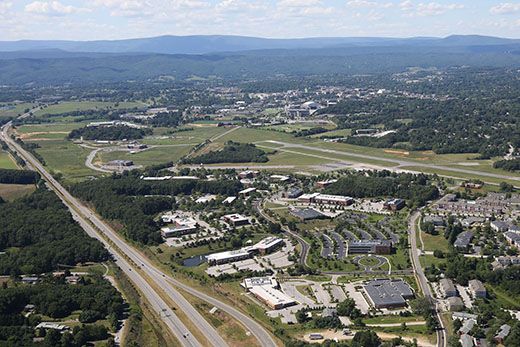
The area, surrounded by lush green valleys and sky-high mountain peaks, is also home to what some might call the region’s secret weapon when it comes to many industries, especially biotech: Virginia Tech, where Bassaganya-Riera is the director of the Nutritional Immunology and Molecular Medicine Laboratory at the school’s Biocomplexity Institute.
If you consider the university’s long history of standout engineering and science-related student programs in human and animal health, add in the abundance of resources being made available to professors and students to commercialize research, as well as the cultural collision of the data and science worlds, you have a breeding ground for biotech innovation.
To help foster that innovation, the Biocomplexity Institute of Virginia Tech was conceived in response to a major policy initiative that established biotechnology as a central area of economic growth for the state. Building on early successes in genomic sequencing, the institute quickly established itself as a leader in another emerging scientific field, the simulation of complex systems. According to its website, “today, the Biocomplexity Institute is answering challenges to human health, habitat, and well-being at a scale that would have been inconceivable only a decade ago.”
Fostering an ecosystem
Without the correct ecosystem, however, it could all be lost. That’s where the Virginia Tech Corporate Research Center (VTCRC) comes into play. The 230-acre park is located adjacent to the Virginia Tech campus and within close proximity to Route 81, a main thoroughfare that makes desirable healthcare-related cities in North Carolina, as well as the nation’s capital, just hours away.
Created in July of 1985, the first building was completed in 1988, and is now home to 33 single-and multi-tenant structures. An expansion on the northwest side of the park provides enough land to construct 16 additional buildings. VTCRC is a for-profit, wholly-owned, private subsidiary of the Virginia Tech Foundation.
The center has the ability to work closely with the university’s teaching mission by identifying opportunities
A building in the VTCRC park.
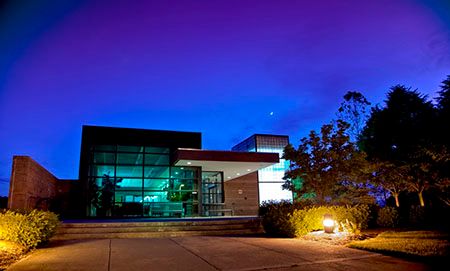
for classes to use VTCRC and its companies for projects, special studies, internships, cooperative education experiences, and on-site instruction.
VTCRC also assists with university research programs and initiatives that facilitate economic development activities throughout the university by matching the needs of VTCRC businesses, facilities, and programs with the research and professional capabilities of Virginia Tech, helping to increase the level of industry-sponsored research at the school.
Much of the credit for the research park’s success is given to Joe Meredith, president and CEO of VTCRC. He, and his staff, work closely with each of the businesses to provide as many resources as possible. In fact, one of the most touted attributes mentioned during a recent media day event was VTCRC’s flexibility, especially when it comes to space, whether it be wet lab or office space. Meredith is known to “tear up leases” and start from scratch to help companies adjust to their needs and keep them in the VTCRC, according to a number of entrepreneurs Pharm Exec spoke with.
Many of the businesses located in the park have roots that trace back to Virginia Tech, such as CELLINK, a 3D bioprinting company; CytoRecovery, a licensed technology that enables the recovery and testing of subpopulations of cancer cells in tumor biopsies; and TechLab, a full-service in vitrodiagnostic product manufacturer.
The fact these companies have been encouraged to stay local has had a direct impact on the economic
Click to enlarge

development in the region by helping to keep talent in the area and also recruit new talent to the region. Rob Day, chief operations officer of Blacksburg-based TechLab, is a prime example. Day, who has been with the medical diagnostics company since 2000, grew up about an hour from VTCRC, and was faced with a tough choice when he first entered the workforce-leave the region for a job in his field or do something completely different.
“After graduating from Virginia Tech, I had limited opportunities in the area at the time,” Day told Pharm Exec. “I worked for about five years locally with a cosmetics factory and was able to then find employment at TechLab. It was quite unusual at the time to be employed in microbiology and immunology in southwest Virginia. However, over the last 20 years or so, we have seen an incredible morph of the area and the biotech industry. …I feel quite lucky to have found employment and been able to stay in this beautiful area.”
Location dollars
Southwest Virginia is visually about as far away from Kendall Square as you can get, and the people who live and work there are okay with that. In fact, area business development leaders are very transparent that the type of C-suite level executive you find in Blacksburg or the New River Valley would likely not be happy long-term in a San Francisco or Boston lifestyle.
The region gives those executives looking for a better quality of life access to world-class talent in a place they can do business without making a compromise. It’s why, no matter the pushback he may initially get from investors, Bassaganya-Riera has no plans of moving his biotech, especially in the early years. “When a company starts out they are usually in bootstrapping mode and budgets are lean,” he says, a consideration that also makes southwest Virginia an appealing location due to its much lower costs to rent and buy space compared to Boston, for example.
Bassaganya-Riera finds that fundraising and networking is not impeded by being outside of the major biotech hubs, and that current-day technology allows him to bring and supply the resources he needs virtually.
But not everyone shares his opinion. Ed Champion, president of Roanoke-based Altede, a biotech whose work centers around food allergy-testing technology that was developed at Virginia Tech, and others toldPharm Execthat raising capital is an issue for them, because it is the one missing piece of the biotech ecosystem puzzle.
Local economic leaders, such as Brian Hamilton, economic development director for the Montgomery County Economic Development, and Charlie Jewell, executive director of Onward New River Valley, both acknowledge that the southwest Virginia area doesn’t have the same financial ecosystem for biopharma companies as it does for technology companies, but that it can be looked at as a chicken and egg situation. As biotech companies become successful and are acquired, it will naturally create a financial ecosystem as the founders decide to invest in other local companies.
Next page, North Carolina ...
Down the road
A few hours away from Blacksburg are the Raleigh-Durham and Winston-Salem areas of North Carolina. Like southwest Virginia, both locales are ripe for innovation in the areas of health and technology, given the natural landscape of having Duke University, North Carolina State University, the University of North Carolina at Chapel Hill, and Wake Forest University all in close proximity.
Jack Bailey, president of US pharmaceuticals for GlaxoSmithKline, moved to the Raleigh-Durham area in the mid-1980s and has watched it transform into a biotech hotspot. Historically, there has been a good relationship between industry and the universities, creating a number of public/private partnerships.
Jack Bailey
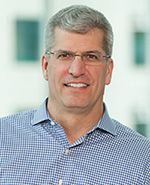
“It’s easy to do business here,” explains Bailey, adding that the cost of living is significantly lower than in other biopharma clusters and that the state government is very business-friendly. Bailey has been heavily involved in the region’s life sciences initiatives and is proud of the work being done to make it a leader in biotech.
With direct flights to San Francisco, as well as other major domestic and international cities, executives who move to the area can find affordable homes, are two hours from the beach, two hours from the mountains, and are never at a loss for talent, Bailey says. Another aspect that makes the area attractive is the number of contract research organizations (CRO) that are headquartered here. For early-stage drug developers, having direct access to CROs is very beneficial.
The talent game
The scientific talent coming out of the area universities is strong, but as Bailey and other pharma leaders explain, there is a concentrated effort to make sure there is enough executive-level support to help these young companies.
Cynthia Schwalm
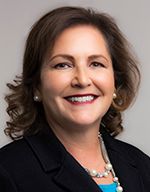
Cynthia Schwalm, who was featured on the cover of Pharm Exec’s September 2017 issue when she was the executive vice president and president of North American commercial operations for Ipsen, recently relocated from New Jersey to Raleigh-Durham.
“I feel like I am in the right place at the right time, because [the area] has all the right ingredients,” says Schwalm, who now serves on the board of directors for G1 Therapeutics, a clinical-stage biopharma company located in Research Triangle Park focused on the discovery, development, and commercialization of novel treatments for cancer. “There are brilliant biotech and life science companies popping up left and right.”
Schwalm is also helping elevate the profile of the annual Council for Entrepreneurial Development’s Life Sciences Conference, which attracts nearly 1,000 worldwide attendees, including entrepreneurs, corporate leaders, and investors. The event, which will be in its 28th year in 2019, has been an important factor in
Click to enlarge

putting the region on the map, especially in bringing in new financial opportunities for local startups.
Money, money, money
Although every entrepreneur would like more funding, when it comes to life science venture capital in Raleigh-Durham, it’s not as much of an issue as compared to other areas of the southeast.
Following her career as a clinical scientist, Christy Shaffer, today the international project leader and associate director of pulmonary and critical care medicine at Burroughs Wellcome Co., joined Inspire Pharmaceuticals in 1995 as its first full-time employee. She was responsible for raising over $300 million for the Durham-based startup, including taking the company public in 2000. As president and CEO, Shaffer grew Inspire from 20 scientists to nearly 250 employees, with revenues of over $100 million.
In 2010, Shaffer retired from her post at Inspire, a year before the company was acquired by Merck & Co. She joined Hatteras Venture Partners, based in Durham, in 2011 as the managing director of Hatteras Discovery, and became a general partner in 2016.
“We don’t have as much venture capital as we’d like to have, but we have a couple strong firms known for working with these young, blossoming companies,” says Shaffer of the Winston-Salem area.
Meanwhile, other venture capital firms from across the country are noticing. While these companies may not have an office in the area, they are investing their money in local biotech companies, and many times, according to Shaffer, are returning more than once.
“Ten years ago, people who wouldn’t come to the region, because it meant two flights from the West Coast, are now moving to North Carolina because they see the vibrant [life sciences] ecosystem,” says Shaffer. “One of the things we do well, unlike San Francisco, is that we are all very collegial, and not as competitive. We see helping the ecosystem as helping us all out [long-term].”
No financial borders
The booming life sciences industry has helped give life to areas of North Carolina that otherwise might have seen an economic decline, like the Winston-Salem area.
“If you would have told me 15 years ago when I stepped foot on the campus of Wake Forest University that I would still be living here, I would have laughed at you,” says Will Partin, senior director, development at Wexford Science & Technology, which partners with institutions to create mixed-use, amenity-rich communities in knowledge-based locations. “When I started in this role in August 2011, within four blocks of where my office currently is, there were zero people working, and there were maybe 30 condos and about 30 apartments. Fast forward to today and four blocks from where I am standing, there is a $1.2 million historic redevelopment happening and over 3,500 people a day are working right here.”
Much of that growth has spawned out of the Wake Forest Baptist Medical Center’s decision to build properties in Winston-Salem. No one knows that better than Anthony Atala, chair and director of the Wake Forest Institute for Regenerative Medicine (WFIRM), which is located in the Richard Dean Biomedical Sciences building, ancohoring the Piedmont Triad Research Park.
“The biotech ecosystem has changed dramatically,” Atla says. “Several years ago, the park evolved into what is now known as Wake Forest Innovation Quarter, a highly interactive science and technology-based community that has added to the revitalization and growth of Winston-Salem’s downtown.”
Wake Forest Innovation Quarter, located in Winston-Salem’s business district and centered in the North Carolina technology corridor, is one of the fastest growing urban-based districts for innovation in the US, accoding to Atala.
The executive, who travels all over the world sharing WFIRM’s science, says its location in Winston-Salem doesn’t limit the instititute financially.
“Boston and San Francisco have a higher density of venture fund firms and investment banks; however, we have experienced no disadvantages being here, as these entities are willing to fund work without geographical limitations,” says Atala.
Michelle Maskaly is Pharm Exec’s Senior Editor. She can be reached at michelle.maskaly@ubm.com and on Twitter at @mmaskaly
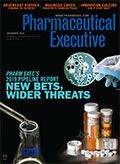
Addressing Disparities in Psoriasis Trials: Takeda's Strategies for Inclusivity in Clinical Research
April 14th 2025LaShell Robinson, Head of Global Feasibility and Trial Equity at Takeda, speaks about the company's strategies to engage patients in underrepresented populations in its phase III psoriasis trials.
Key Findings of the NIAGARA and HIMALAYA Trials
November 8th 2024In this episode of the Pharmaceutical Executive podcast, Shubh Goel, head of immuno-oncology, gastrointestinal tumors, US oncology business unit, AstraZeneca, discusses the findings of the NIAGARA trial in bladder cancer and the significance of the five-year overall survival data from the HIMALAYA trial, particularly the long-term efficacy of the STRIDE regimen for unresectable liver cancer.
Expanding Immune Response Testing to Support Vaccine Development
April 22nd 2025Nigel McCracken, chief operating officer, Virax Biolabs, discusses the expansion of its ViraxImmune platform into areas such as transplant monitoring, vaccine efficacy, latent virus reactivation, and CAR T cell therapy.